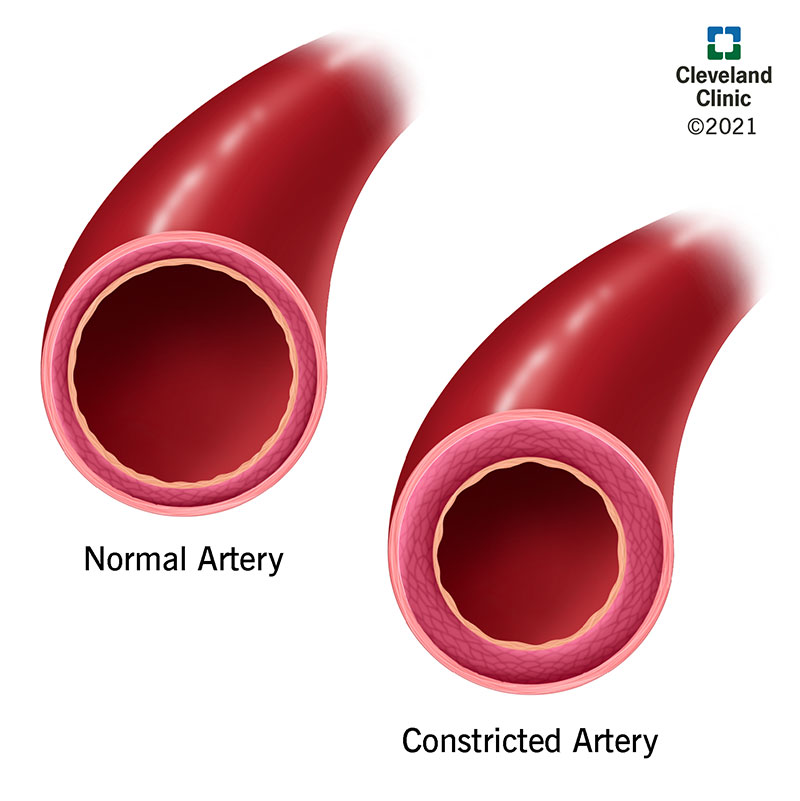Which statement regarding alpha 1 and alpha 2 receptors is correct?
Alpha 1 agonist and alpha 2 antagonist increase blood pressure
Alpha 1 agonist and alpha 2 agonist decrease blood pressure
Alpha 1 and alpha 2 agonist increase blood pressure
Alpha 1 antagonist and alpha 2 agonist decrease blood pressure
The Correct Answer is A
Choice A: Alpha 1 Agonist and Alpha 2 Antagonist Increase Blood Pressure
Alpha 1 receptors are primarily located on the smooth muscles of blood vessels. When activated by an agonist, these receptors cause vasoconstriction, which increases blood pressure. On the other hand, alpha 2 receptors are found on presynaptic nerve terminals and act to inhibit the release of norepinephrine. An antagonist at alpha 2 receptors would prevent this inhibition, leading to increased norepinephrine release, further promoting vasoconstriction and increasing blood pressure. Therefore, the combination of an alpha 1 agonist and an alpha 2 antagonist would synergistically increase blood pressure.
Choice B: Alpha 1 Agonist and Alpha 2 Agonist Decrease Blood Pressure
Alpha 1 agonists increase blood pressure by causing vasoconstriction. Alpha 2 agonists, however, decrease blood pressure by inhibiting norepinephrine release, leading to vasodilation. Therefore, this combination would not decrease blood pressure as the effects of the alpha 1 agonist would counteract the effects of the alpha 2 agonist.
Choice C: Alpha 1 and Alpha 2 Agonist Increase Blood Pressure
While alpha 1 agonists increase blood pressure through vasoconstriction, alpha 2 agonists actually decrease blood pressure by reducing norepinephrine release. Therefore, this statement is incorrect as the combined effect would not result in an increase in blood pressure.
Choice D: Alpha 1 Antagonist and Alpha 2 Agonist Decrease Blood Pressure
Alpha 1 antagonists block the vasoconstrictive action of alpha 1 receptors, leading to vasodilation and a decrease in blood pressure. Alpha 2 agonists also decrease blood pressure by inhibiting norepinephrine release. Therefore, this combination would indeed decrease blood pressure, making this statement partially correct but not the best answer compared to choice A.
Nursing Test Bank
Naxlex Comprehensive Predictor Exams
Related Questions
Correct Answer is D
Explanation
Choice A: Minimal Effect on Vessels
A reduction in blood pH, which indicates acidosis, does not have a minimal effect on blood vessels. Acidosis can significantly impact vascular tone and function. Therefore, this choice is incorrect as it underestimates the physiological changes that occur in response to a decrease in pH.
Choice B: No Effect on Vessels
Similarly, stating that a reduction in blood pH has no effect on vessels is inaccurate. Blood pH is tightly regulated, and deviations from the normal range (7.35-7.45) can lead to significant physiological responses. Acidosis can alter vascular tone, making this choice incorrect.
Choice C: Vasodilation
While vasodilation can occur in response to certain conditions, a reduction in blood pH typically leads to vasoconstriction rather than vasodilation. Vasodilation is more commonly associated with an increase in blood pH (alkalosis) or other factors such as increased levels of nitric oxide or prostaglandins.
Choice D: Vasoconstriction
When the pH of blood reduces, indicating acidosis, it often leads to vasoconstriction. This response is mediated by chemoreceptors that detect changes in pH and stimulate the vasomotor center to increase vascular tone. Vasoconstriction helps to maintain blood pressure and ensure adequate perfusion of vital organs during acidosis. Therefore, this is the correct answer.

Correct Answer is C
Explanation
Choice A: Hypoventilation
Hypoventilation refers to inadequate ventilation that leads to an increased concentration of carbon dioxide (CO2) in the blood, resulting in respiratory acidosis. This condition is characterized by a decrease in blood pH due to the accumulation of CO2, which forms carbonic acid. Hypoventilation does not cause metabolic acidosis, as it primarily affects the respiratory component of acid-base balance.
Choice B: Massive Blood Transfusion
Massive blood transfusion can lead to metabolic alkalosis rather than metabolic acidosis. This is because stored blood products often contain citrate, which is metabolized to bicarbonate in the liver, increasing the blood’s alkalinity. Additionally, the transfusion of large volumes of blood can dilute the plasma bicarbonate concentration, but this typically does not result in metabolic acidosis.
Choice C: Kidney Failure
Kidney failure is a common cause of metabolic acidosis. The kidneys play a crucial role in maintaining acid-base balance by excreting hydrogen ions (H+) and reabsorbing bicarbonate (HCO3-). When the kidneys fail, they are unable to remove sufficient acids from the blood, leading to an accumulation of metabolic acids and a decrease in blood pH. This condition is known as metabolic acidosis and can result from chronic kidney disease (CKD) or acute kidney injury (AKI).
Choice D: Hyperventilation
Hyperventilation leads to respiratory alkalosis, not metabolic acidosis. This condition occurs when there is excessive ventilation, causing a decrease in CO2 levels in the blood and an increase in blood pH. Hyperventilation reduces the concentration of carbonic acid, leading to an alkaline state. It does not contribute to metabolic acidosis, which involves an imbalance in the metabolic components of acid-base regulation.
Whether you are a student looking to ace your exams or a practicing nurse seeking to enhance your expertise , our nursing education contents will empower you with the confidence and competence to make a difference in the lives of patients and become a respected leader in the healthcare field.
Visit Naxlex, invest in your future and unlock endless possibilities with our unparalleled nursing education contents today
Report Wrong Answer on the Current Question
Do you disagree with the answer? If yes, what is your expected answer? Explain.
Kindly be descriptive with the issue you are facing.
